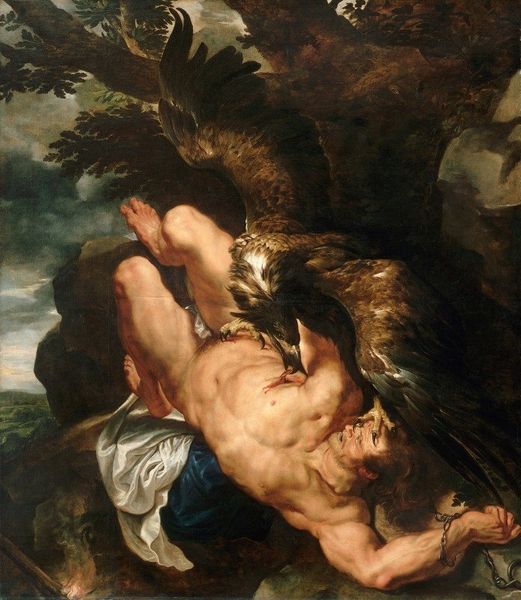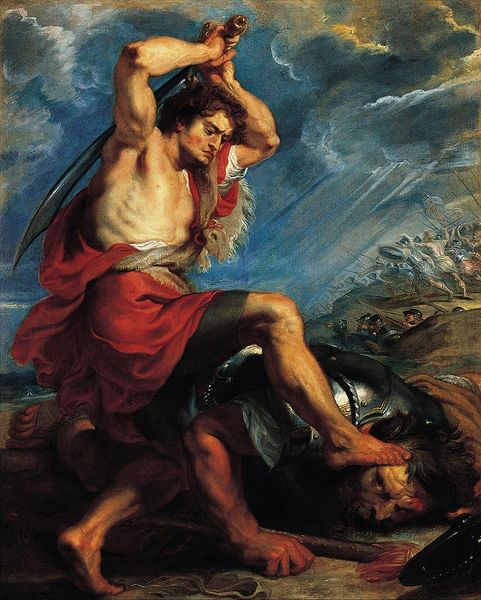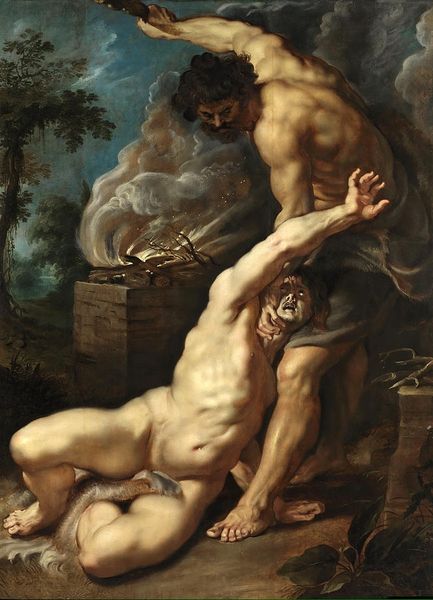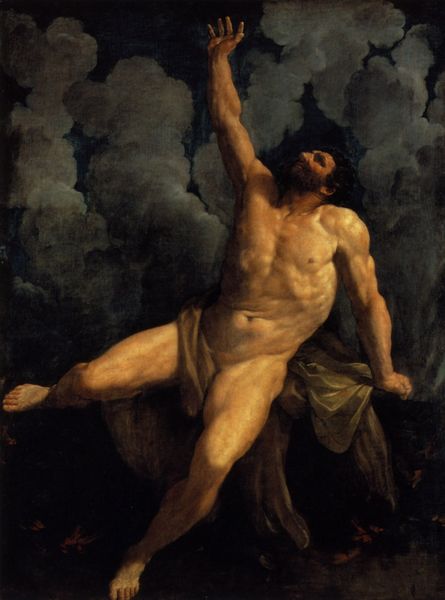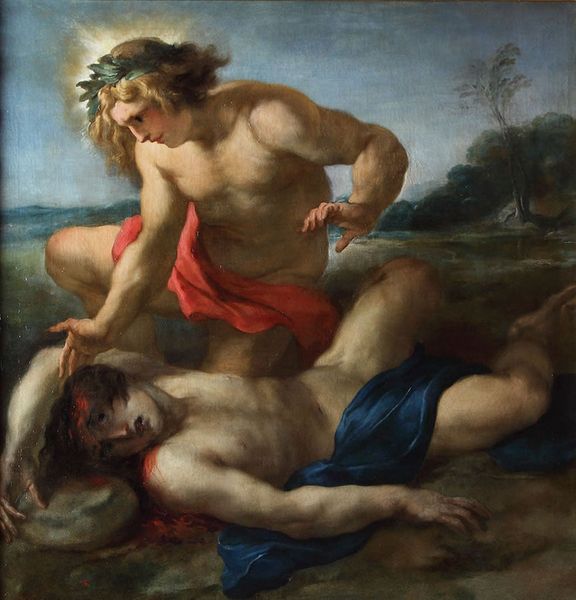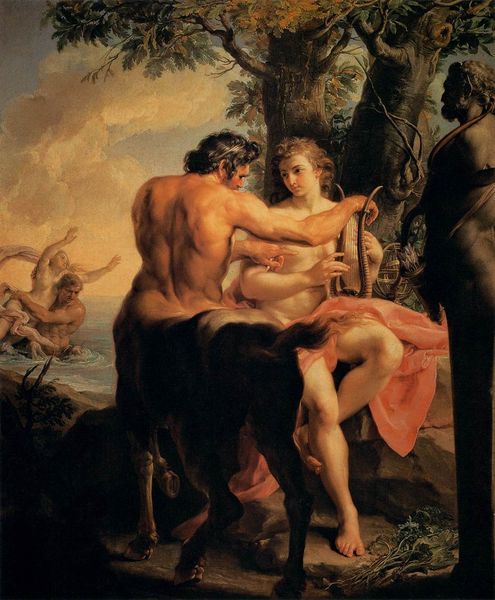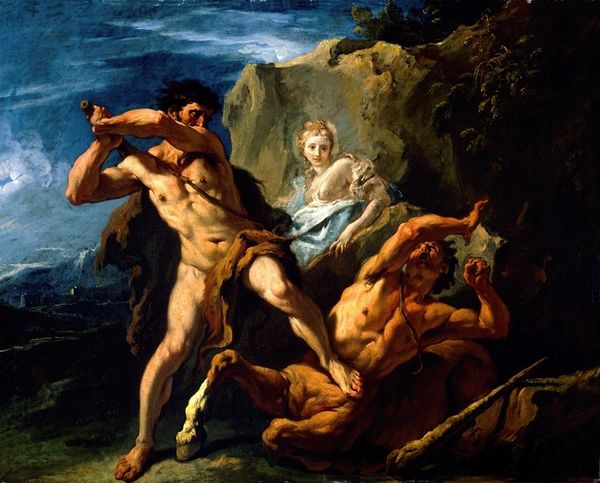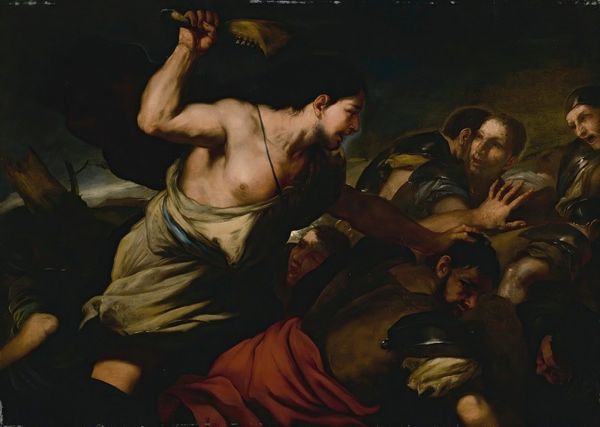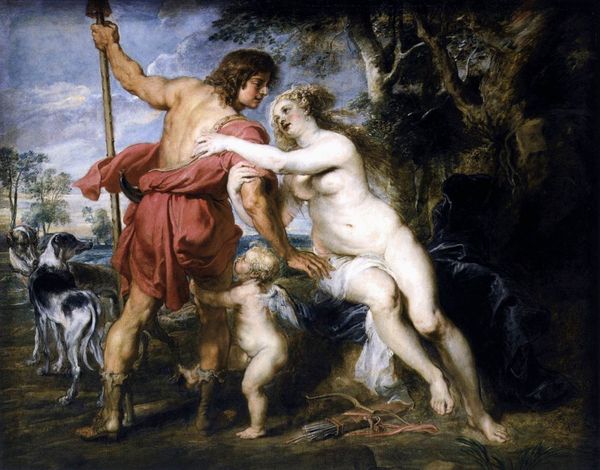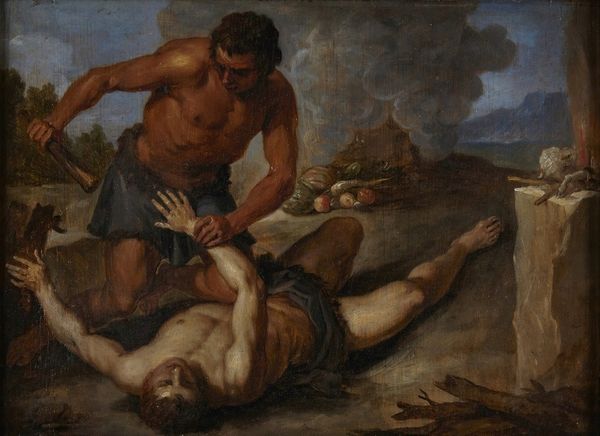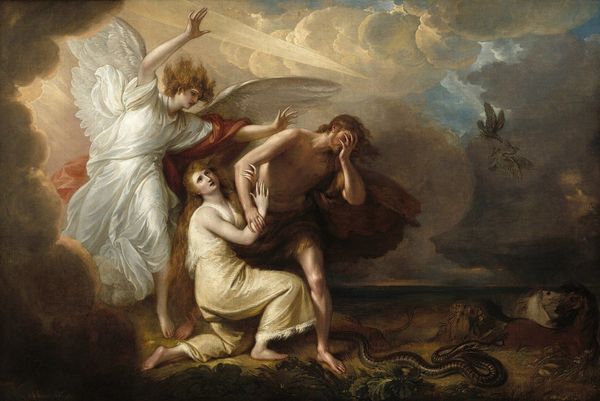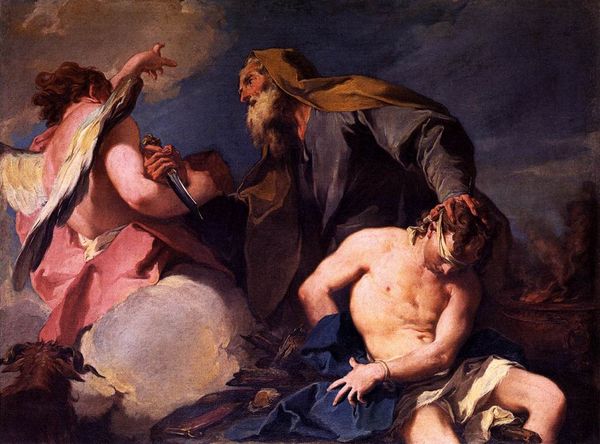
Dimensions: 298 x 282 cm
Copyright: Public domain
Editor: Here we have Titian’s *Cain and Abel* from 1544, crafted with oil paint. The drama is undeniable; you can practically feel the brute force of the act. What strikes you most about this piece? Curator: I see a raw display of labor and its violent consequences. Note how Titian renders the muscular exertion—the strain in Cain’s legs, the weight of his body pressing down. This isn’t just about religious narrative; it's about the physical reality of early human existence, the material conditions that drive such brutality. Editor: So, you’re saying the materials, even the bodies themselves, are crucial to understanding the painting's meaning? Curator: Absolutely. Consider the costuming, the rudeness of the club, and the positioning of the corpses, each reflecting the primitive means of the character’s life. Renaissance art is so preoccupied with humanism that we overlook that humans must feed and clothe themselves somehow, with primitive and cruel methods sometimes being their only way. And consider the societal context—how were these materials and narratives consumed by Titian’s patrons? Was this simply moralizing, or did it offer a deeper reflection on their own power and means of production? Editor: It's fascinating to consider the labor behind the image itself. I guess the grinding of pigments, the stretching of the canvas – Titian’s labor contributed to the making of this brutal, yet beautiful, scene. Curator: Precisely! By examining the materiality of art and the means of its production, we move beyond aesthetics and into a critical understanding of society itself. This gives us a whole new level of considering an artwork. Editor: Thanks. It really shifts my perspective on how to appreciate a painting.
Comments
No comments
Be the first to comment and join the conversation on the ultimate creative platform.
